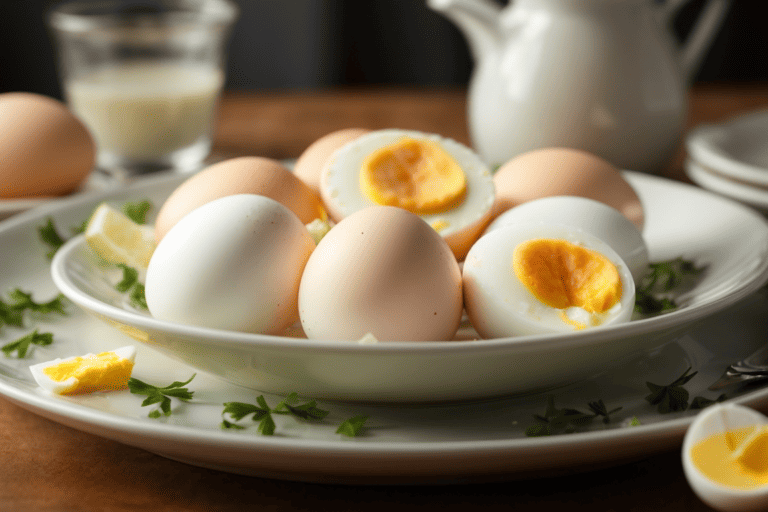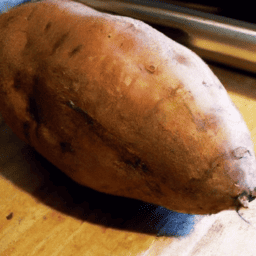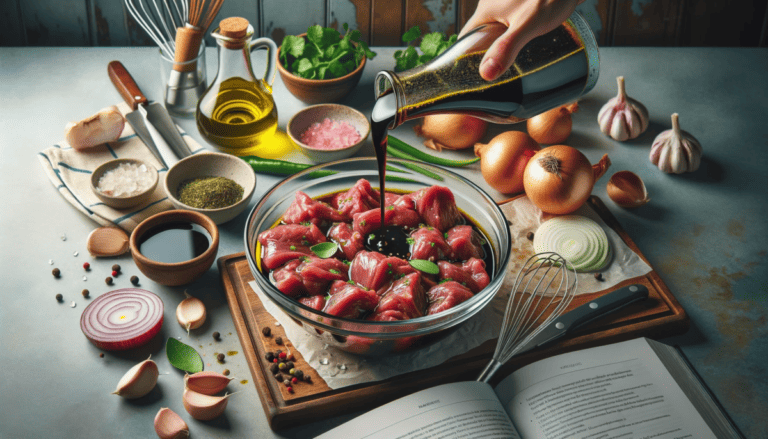How To Cook Orzo In Rice Cooker
If you love orzo and want to find a convenient way to cook it, look no further than your rice cooker. In this article, you will discover a simple and hassle-free method to cook orzo using a rice cooker. Enjoy perfectly cooked orzo every time, without the need for constant stirring or worry about it sticking to the bottom of the pot. With this easy technique, you can elevate your meals with fluffy and flavorful orzo, all with the help of your trusty rice cooker.
Understanding the Difference between Orzo and Rice
Defining orzo and its origins
Orzo is a type of pasta that is shaped like a grain of rice. It is commonly used in Mediterranean cuisines, particularly in Italian and Greek dishes. The word “orzo” actually means “barley” in Italian, but despite its name, orzo is not made from barley. Instead, it is made from semolina wheat flour, which gives it a slightly nutty flavor and a firm texture when cooked.
Orzo has a long history and can be traced back to ancient times. It is believed to have originated in Italy, where it was traditionally made by hand by rolling small pieces of dough between one’s palms. Over time, the production of orzo became more automated, and it is now widely available in grocery stores and markets around the world.
Highlighting the similarities and differences between orzo and rice
While orzo may resemble rice in appearance, there are some key differences between the two. One notable difference is the composition of the grains. Orzo is made from wheat flour, while rice is derived from the natural starches found in rice grains. This difference in composition also affects the cooking process.
When cooked, orzo retains a firm texture and remains separate, similar to al dente pasta. Rice, on the other hand, becomes soft and fluffy. The different textures of orzo and rice open up a variety of culinary possibilities, as they lend themselves well to different types of dishes and preparations.
Listing the uses of orzo in various cuisines
Orzo is a versatile ingredient that can be used in a wide range of dishes. In Italian cuisine, it is commonly used in soups, such as minestrone, or in pasta salads. In Greek cuisine, orzo is often used in pilaf-style dishes, served alongside roasted meats and vegetables. It can also be used as a base for casseroles or stuffed vegetables.
In addition to these traditional uses, orzo can be incorporated into other cuisines and dishes. It can be cooked risotto-style, using a rice cooker, to create a creamy, flavorful dish. Orzo can also be used as a substitute for rice in stir-fries or as a filling for stuffed peppers. The possibilities are endless, and the choice to use orzo instead of rice can add a unique twist to your favorite recipes.
The Benefits of Using a Rice Cooker
Explaining the function of a rice cooker
A rice cooker is a kitchen appliance specifically designed for cooking rice. It consists of an inner pot, a heating element, and a thermostat. The inner pot is where the rice is placed, and the heating element and thermostat work together to regulate the cooking process.
The main function of a rice cooker is to automate the process of cooking rice. It takes the guesswork out of the equation and ensures that the rice is cooked to perfection every time. Once the rice and water are added to the rice cooker, all you have to do is press a button, and the cooker will do the rest.
Outlining the advantages of using a rice cooker
Using a rice cooker offers several advantages. First and foremost, it takes the guesswork out of cooking rice. With a rice cooker, you no longer have to worry about undercooking or overcooking the rice. The cooker will automatically adjust the temperature and cooking time to achieve perfectly cooked rice.
Another advantage of using a rice cooker is convenience. Once you add the rice and water to the cooker, you can set it and forget it. There’s no need to constantly monitor the pot on the stove or worry about the rice sticking or burning. The rice cooker will automatically switch to a “keep warm” mode once the rice is cooked, ensuring that it stays warm and ready to serve.
Additionally, using a rice cooker can save time and energy. Instead of cooking rice on the stove, where you have to bring the water to a boil and then simmer for a specific amount of time, a rice cooker simplifies the process. It will cook the rice more efficiently, allowing you to focus on other tasks in the kitchen.
Discussing the versatility of a rice cooker for cooking various foods
Although a rice cooker is primarily designed for cooking rice, it can also be used to prepare a variety of other foods. Many rice cookers have additional settings and features that make them versatile appliances in the kitchen.
For example, some rice cookers have a “steam” function, which allows you to steam vegetables, dumplings, or fish while the rice cooks. This makes it easy to prepare a complete meal in one appliance.
Some rice cookers also have settings for cooking other grains, such as quinoa or barley. These settings adjust the cooking time and temperature accordingly, ensuring that your grains are perfectly cooked.
Furthermore, some advanced rice cookers offer a “slow cook” setting, which allows you to cook stews, soups, or even desserts. This expansion of capabilities makes a rice cooker a valuable addition to any kitchen, particularly for those who appreciate convenience and versatility.
Choosing the Right Orzo and Rice Cooker
Discussing factors to consider when choosing orzo
When choosing orzo, there are a few factors to consider to ensure that you select the right type for your needs. First, consider the texture you desire in your dish. Some orzo varieties are slightly thicker and have a chewier texture, while others are thinner and cook to a more tender consistency.
Also, take into account the flavor profile you want to achieve. Some orzo varieties are plain and neutral in taste, while others may have added herbs or spices. Consider the flavor profile of your dish and choose the orzo variety that complements it.
Lastly, consider the cooking time. Different brands or varieties of orzo may have slightly different cooking times. Read the instructions on the package and factor in the cooking time when planning your meal. Keep in mind that using a rice cooker may slightly alter the cooking time, so it’s always a good idea to test and adjust as needed.
Guide to selecting the best rice cooker for your needs
When it comes to choosing a rice cooker, there are several factors to consider to ensure that you find the best one for your needs.
First, decide on the size of the rice cooker. Rice cookers come in various sizes, ranging from small models that can cook one to two cups of rice, to larger models that can cook up to ten cups of rice. Consider the number of people you regularly cook for and choose a size that suits your needs.
Next, consider the features and settings of the rice cooker. Some rice cookers offer basic functions, such as white rice and brown rice settings, while others have more advanced features, like a delay timer or a porridge setting. Think about the types of dishes you frequently cook and choose a rice cooker that offers the appropriate settings.
Additionally, consider the durability and quality of the rice cooker. Look for models made from high-quality materials, such as stainless steel or durable non-stick coatings. Read reviews and consumer feedback to get an idea of the reliability and performance of different rice cooker brands and models.
Lastly, consider your budget. Rice cookers come in a range of price points, so it’s important to set a budget and find a rice cooker that offers good value for your money. Consider your needs and preferences, and choose a rice cooker that fits within your budget.
Explaining how to care for your orzo and rice cooker
Caring for your orzo and rice cooker is essential to maintain their quality and prolong their lifespan. Here are some tips for proper care:
For orzo, store it in an airtight container in a cool, dry place. This will help prevent moisture and humidity from affecting the texture and flavor of the orzo. Avoid storing it near strong-smelling foods, as orzo can absorb odors.
When it comes to cleaning, rinse the orzo in a colander under cold water to remove any excess starch or debris before cooking. This will help prevent the orzo from sticking together during cooking.
As for the rice cooker, clean the inner pot and other removable parts after each use. Most rice cookers have non-stick coatings, so it is important to use non-abrasive cleaning tools, such as a soft sponge or cloth, to avoid scratching the surface. Wipe down the exterior of the rice cooker with a damp cloth as needed.
Regular maintenance is also important for the longevity of your rice cooker. Check the manufacturer’s instructions for any specific care recommendations. Some rice cookers may require periodic descaling or maintenance to remove mineral deposits or ensure optimal performance.
Proper care and maintenance of both your orzo and rice cooker will ensure that they continue to deliver delicious, hassle-free meals for years to come.
Preparation Before Cooking Orzo
Outlining the materials and ingredients needed
Before you start cooking orzo in a rice cooker, it’s important to gather all the necessary materials and ingredients. Here’s what you’ll need:
- Orzo: Choose the desired amount of orzo based on your recipe and the number of servings you intend to make.
- Rice cooker: Make sure you have a functioning rice cooker with the appropriate settings for cooking rice or grains.
- Measuring cup: Use a measuring cup to ensure accurate measurements of the orzo and water.
- Water: The amount of water needed will vary based on the quantity of orzo being cooked. Refer to the package instructions or your recipe for the recommended water-to-orzo ratio.
- Optional seasonings: Depending on your recipe or personal preference, you may want to add salt, herbs, spices, or other seasonings to enhance the flavor of the orzo.
How to clean and rinse orzo before cooking
Before cooking orzo, it is important to clean and rinse it properly to remove excess starch. Here’s a step-by-step guide to cleaning and rinsing orzo:
- Place the desired amount of orzo in a colander or sieve.
- Rinse the orzo under cold water, using your hands or a spoon, to agitate the grains and remove any dirt or debris.
- Continue rinsing until the water runs clear and is no longer cloudy. This will help remove excess starch and prevent the orzo from sticking together during cooking.
- Once the orzo is rinsed and clean, shake the colander or sieve gently to remove any excess water, but do not dry the orzo completely. It should still be slightly damp when placed in the rice cooker.
Tips on creating flavorful orzo dishes
To enhance the flavor of your orzo dishes, consider the following tips:
- Cook the orzo in vegetable or chicken broth instead of water. This will infuse the orzo with a rich, savory flavor.
- Add aromatics like minced garlic or diced onions to the rice cooker before cooking the orzo. This will impart a fragrant base to the dish.
- Sprinkle herbs like parsley, basil, or oregano into the rice cooker during the cooking process. The heat will release their flavors and infuse the orzo with a fresh, herbaceous taste.
- Consider using a flavored oil, such as garlic-infused olive oil or chili oil, to sauté the orzo before cooking. This will add an extra layer of flavor and complexity to your dish.
By experimenting with different ingredients and flavor combinations, you can create unique and delicious orzo dishes that suit your taste preferences.
Step-by-step Guide to Cooking Orzo in the Rice Cooker
Explaining the process from start to finish
Cooking orzo in a rice cooker is a simple and straightforward process. Here’s a step-by-step guide to help you achieve perfectly cooked orzo:
- Measure the desired amount of orzo using a measuring cup and transfer it to the inner pot of the rice cooker.
- Rinse the orzo under cold water in a colander or sieve to remove any excess starch.
- Shake the colander or sieve gently to remove excess water, and transfer the slightly damp orzo to the inner pot of the rice cooker.
- Add the appropriate amount of water according to the water-to-orzo ratio specified on the package or in your recipe. Use a measuring cup to ensure accuracy.
- If desired, add any seasonings, herbs, or other flavorings to the rice cooker.
- Close the lid of the rice cooker and select the appropriate setting for cooking rice or grains. If your rice cooker has a white rice or grain setting, choose that option.
- Press the start or cook button to begin the cooking process.
- Allow the rice cooker to cook the orzo according to the selected setting. The cooking time will vary depending on the model of your rice cooker and the specific instructions for cooking orzo. Refer to the package instructions or recipe for a general guideline.
- Once the cooking cycle is complete, the rice cooker will automatically switch to a “keep warm” mode. Let the orzo sit in the rice cooker for a few minutes to absorb any remaining moisture and to allow the flavors to meld.
- Fluff the orzo gently with a fork before serving.
By following these steps, you can achieve perfectly cooked orzo in your rice cooker every time.
Cooking Times and Temperatures for Orzo in a Rice Cooker
Describing how long to cook orzo in the rice cooker
The cooking time for orzo in a rice cooker can vary depending on the specific model of your rice cooker and the desired texture of the orzo. As a general guideline, orzo typically takes around 15-20 minutes to cook in a rice cooker.
However, it’s important to refer to the package instructions or your recipe for the recommended cooking time. Different brands or varieties of orzo may have slightly different cooking times. It’s always best to test the orzo for doneness during the cooking process to ensure that it is cooked to your desired consistency.
Explaining how temperature settings may vary per rice cooker model
Rice cookers may have different temperature settings and variations in cooking times, depending on the model and brand. While most rice cookers have a standard setting for cooking rice or grains, some advanced models may offer more precise temperature control.
When cooking orzo in a rice cooker, it’s important to understand the specific temperature settings of your particular model. If your rice cooker has multiple settings, such as a white rice setting and a brown rice setting, choose the setting that corresponds to the type of orzo you are cooking.
It’s worth noting that using a rice cooker may slightly alter the cooking time compared to traditional stovetop methods. Rice cookers typically cook at a lower temperature than boiling water on the stove, which can result in a slightly longer cooking time. It’s always a good idea to test the orzo for doneness during the cooking process to ensure that it is cooked to your desired consistency.
Determining if Orzo is Perfectly Cooked
Diagnosing the signs of undercooked or overcooked orzo
When cooking orzo, it’s important to determine if it is perfectly cooked. Here are the signs of undercooked and overcooked orzo to watch for:
-
Undercooked orzo: If the orzo is undercooked, it will be firm and may have a slightly crunchy or starchy texture. It will not have absorbed enough liquid and may taste raw. If you bite into a grain of orzo and it feels hard or uncooked in the center, it needs more time to cook.
-
Overcooked orzo: On the other hand, overcooked orzo will be soft and mushy. The grains will lose their shape and become clumpy. If you notice that the orzo has become excessively soft or has broken apart, it is likely overcooked.
Explaining how to check if your orzo is perfectly cooked
To check if your orzo is perfectly cooked, take a taste test. Scoop out a few grains of orzo and allow them to cool slightly before sampling. The orzo should be tender yet still slightly firm to the bite, similar to al dente pasta.
Alternatively, you can also press a grain of orzo between your thumb and forefinger. If the orzo easily flattens or crushes, it is likely overcooked. If it holds its shape and offers slight resistance, it is likely perfectly cooked.
Remember that the cooking time and desired texture may vary depending on personal preference and specific recipes. It’s always recommended to test the orzo for doneness and adjust the cooking time accordingly.
Cooking Orzo with Other Ingredients
Recipe suggestions for cooking orzo with vegetables, herbs, and other ingredients
Cooking orzo with other ingredients is a great way to create flavorful and nutritious meals. Here are some recipe suggestions for cooking orzo with vegetables, herbs, and other ingredients:
-
Orzo Caprese Salad:
- Cook the orzo according to the previous sections’ instructions and set it aside to cool.
- In a separate bowl, combine halved cherry tomatoes, diced fresh mozzarella, chopped fresh basil, and cooked diced chicken (optional).
- Toss the cooked orzo with the tomato and mozzarella mixture.
- Drizzle with balsamic glaze and olive oil, and season with salt and pepper to taste.
- Serve chilled as a refreshing and satisfying salad.
-
Lemon and Herb Orzo with Roasted Vegetables:
- Toss diced vegetables, such as zucchini, bell peppers, and red onions, with olive oil, lemon juice, minced garlic, dried herbs (such as thyme and rosemary), salt, and pepper.
- Spread the seasoned vegetables in a single layer on a baking sheet and roast in the oven until tender and slightly caramelized.
- Meanwhile, cook the orzo according to the previous sections’ instructions and set it aside.
- Combine the cooked orzo with the roasted vegetables, add fresh herbs (such as parsley or basil), and toss gently.
- Adjust the seasoning as needed and serve as a flavorful side dish or light main course.
Guidance on adjusting cooking times and measurements when adding additional ingredients
When cooking orzo with additional ingredients, it is important to consider how they may affect the cooking time and water absorption. Here are some guidelines for adjusting cooking times and measurements:
-
Diced vegetables: If adding diced vegetables, such as carrots or peas, to the orzo, consider adding them to the rice cooker in the beginning, along with the orzo and water. These vegetables will soften and cook along with the orzo, absorbing liquid and adding flavor. Adjust the cooking time as needed to ensure that the vegetables are cooked to your desired tenderness.
-
Leafy greens: If adding leafy greens, such as spinach or kale, consider adding them towards the end of the cooking process. Stir them into the cooked orzo during the “keep warm” phase, allowing the residual heat to wilt the greens. This will help retain their vibrant color and minimize overcooking.
-
Protein: If adding cooked protein, such as diced chicken or shrimp, to the orzo, mix it in after the orzo is cooked and drained. This will prevent the protein from overcooking and becoming tough.
-
Adjusting water measurements: When adding additional ingredients, the amount of water needed may vary. Some ingredients, like canned tomatoes or roasted vegetables, may release liquid during the cooking process, requiring slightly less water. Conversely, ingredients like dried mushrooms or dried fruits may absorb liquid, requiring slightly more water. Adjust the water measurement accordingly to ensure that the orzo is properly cooked and retains the desired texture.
By experimenting with different ingredients and adjusting cooking times and measurements as needed, you can create a wide variety of delicious and satisfying orzo dishes.
Storing and Reheating Cooked Orzo
Tips on storing leftover orzo
If you have leftover cooked orzo, it’s important to store it properly to maintain its quality and prevent spoilage. Here are some tips for storing leftover orzo:
-
Cool the orzo: Allow the cooked orzo to cool to room temperature before storing. This will help prevent condensation and moisture buildup.
-
Store in an airtight container: Transfer the cooled orzo to an airtight container. A glass container or plastic storage bag with a sealable top works well. Make sure the container is clean and dry before adding the orzo.
-
Refrigerate promptly: Place the airtight container of orzo in the refrigerator within two hours of cooking. Storing the orzo in the refrigerator will help slow down bacterial growth and maintain its freshness.
-
Use within 3-4 days: Leftover orzo should be consumed within 3-4 days to ensure optimal flavor and quality. If you are unsure about its freshness, give it a quick sniff test before consumption. If it smells off or has an unusual odor, it’s best to discard it.
Explaining how to reheat orzo in the rice cooker or other appliances
To reheat leftover orzo, you have several options. Here are some methods for reheating orzo in the rice cooker or other appliances:
-
Rice cooker: If you have a rice cooker with a “warm” or “reheat” setting, transfer the desired amount of leftover orzo to the rice cooker inner pot. Select the appropriate setting and allow the orzo to reheat until it reaches your desired temperature. Stir occasionally to ensure even heating.
-
Stovetop: To reheat orzo on the stovetop, place it in a saucepan or skillet with a splash of water or broth. Heat over medium-low heat until the orzo is warmed through, stirring occasionally to prevent sticking or clumping.
-
Microwave: If you prefer to use a microwave, transfer the leftover orzo to a microwave-safe bowl. Cover the bowl loosely with a microwave-safe lid or microwave-safe plastic wrap. Heat on medium power in short intervals, stirring occasionally, until the orzo is heated through.
Remember to reheat the orzo gently to avoid overcooking or drying it out. If needed, add a splash of water or broth to add moisture and prevent sticking.
Troubleshooting Common Issues
Solutions to common problems like sticky or uncooked orzo
While cooking orzo in a rice cooker is generally a straightforward process, it is not uncommon to encounter some issues. Here are some common problems and their solutions:
-
Sticky or clumpy orzo: If your orzo turns out sticky or clumpy, it may be due to using too much water or overcooking. To fix this, try reducing the water-to-orzo ratio and cooking the orzo for a slightly shorter time. Additionally, rinsing the orzo thoroughly before cooking can help prevent clumping.
-
Undercooked orzo: If your orzo is undercooked, it may be due to not adding enough water or cooking it for an insufficient amount of time. Make sure to measure the water accurately and give the orzo ample time to cook. If needed, add a little extra water and continue cooking until the desired tenderness is achieved.
-
Overcooked orzo: If your orzo is overcooked and mushy, it may be due to using too much water or cooking it for too long. To prevent this, make sure to measure the water accurately and check the orzo for doneness regularly. If the orzo is already overcooked, drain any excess liquid and use it in recipes where a softer texture is desired, such as soups or casseroles.
-
Unevenly cooked orzo: If your orzo is unevenly cooked, with some grains undercooked and others overcooked, it may be due to inconsistent heat distribution in the rice cooker. To resolve this, try stirring the orzo halfway through the cooking process to ensure even cooking. You can also try using a rice cooker with a more advanced heating technology that provides more even heat distribution.
Advice on preventing these issues in future cooking sessions
To prevent common issues when cooking orzo in a rice cooker, consider the following tips:
-
Measure accurately: Use a measuring cup to ensure accurate measurements of both the orzo and water. This will help maintain the correct water-to-orzo ratio and prevent issues like sticky or clumpy orzo.
-
Rinse the orzo: Thoroughly rinse the orzo under cold water before cooking to remove excess starch and prevent clumping.
-
Check for doneness: Test the orzo for doneness during the cooking process to avoid undercooking or overcooking. Take a taste test or press a grain of orzo between your thumb and forefinger to check for the desired texture.
-
Adjust settings and times: Experiment with different settings and cooking times to find the perfect cooking parameters for your specific rice cooker model. Keep a record of the settings that yield the best results for future reference.
-
Practice and adapt: Cooking orzo in a rice cooker may require some practice and adjustment to achieve the desired consistency. Don’t be discouraged by initial setbacks and use them as learning opportunities to improve your cooking skills.
By following these tips and troubleshooting techniques, you can overcome common issues and become more confident in cooking orzo in your rice cooker.
In conclusion, understanding the difference between orzo and rice is essential for culinary enthusiasts. Orzo, a pasta shaped like a grain of rice, offers unique textures and flavors that can elevate various dishes. Using a rice cooker provides convenience, consistent results, and versatility in cooking rice and grains like orzo. By selecting the right orzo and rice cooker, properly preparing the orzo, and following a step-by-step guide in the rice cooker, you can master the art of cooking orzo to perfection. Additionally, storage and reheating tips, along with troubleshooting techniques, ensure that your orzo dishes remain delicious and hassle-free. So, gather your ingredients, follow the instructions, and embark on a culinary adventure with orzo and your trusty rice cooker!






